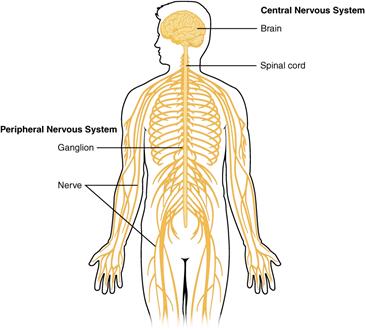Spinal muscular atrophy
Introduction to the central and peripheral nervous systems
The nervous system is a complex system of nerves and neurons. It transmits signals between different parts of the body, coordinating voluntary and involuntary actions.
The nervous system consists of the central nervous system and the peripheral nervous system.
The central nervous system consists of the brain and the spinal cord. The spinal cord connects to a section of the brain called the brainstem. It controls most of the body’s functions by passing messages between the brain and the rest of the body. Disease or injury can damage the spinal cord, disrupting this exchange of information.
The peripheral nervous system consists of a complex system of sensory neurons, ganglia (clusters of neurons) and nerves. They connect to each other and to the central nervous system and regulate its functions. Damage to the peripheral nerves can cause weakness, numbness and pain.
The peripheral nervous system consists of the:
- Somatic nervous system: controls almost all voluntary muscle movements and processes external sensory information.
- Autonomic nervous system: involuntary control of bodily functions such as fight or flight, heart rate and digestion.
The peripheral nervous system consists of sensory and motor neurons:
- Sensory neurons: Detect sensations such as pain and heat.
- Motor neurons: Stimulate muscles and other parts of the body to perform a function or reflex.
